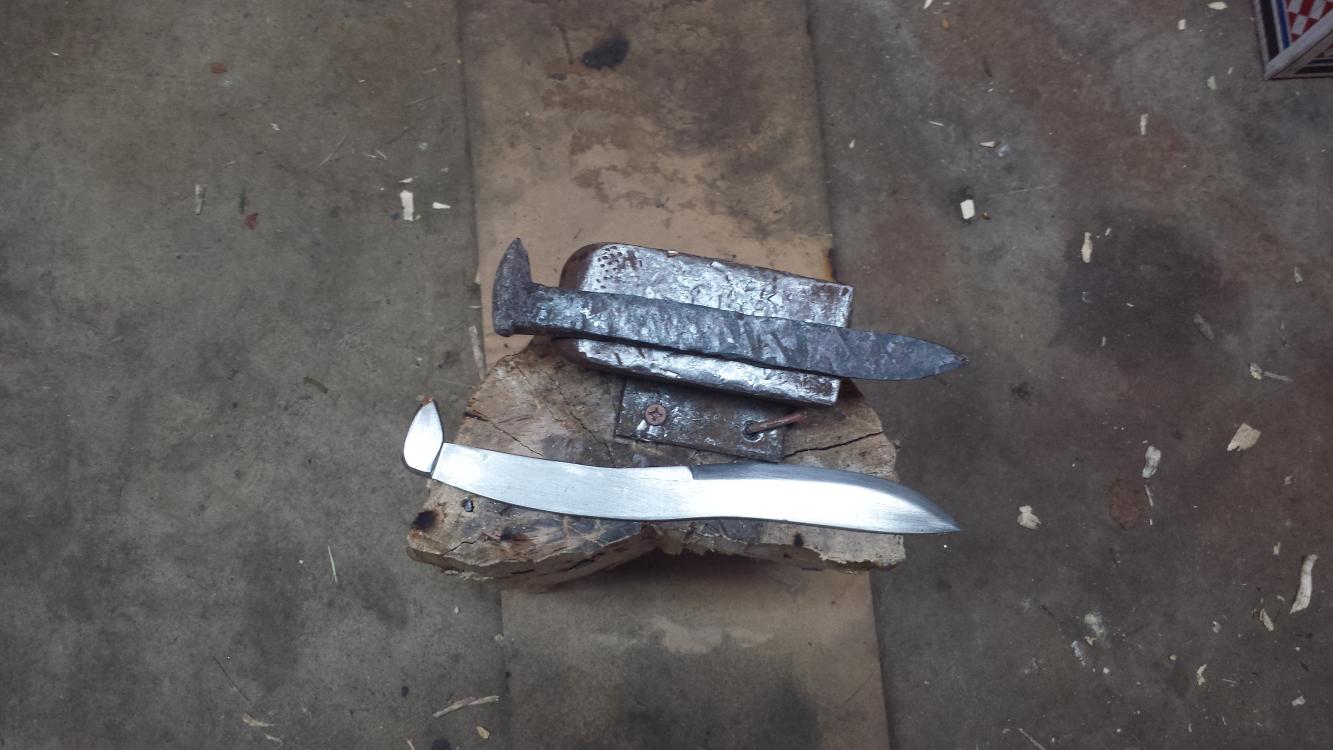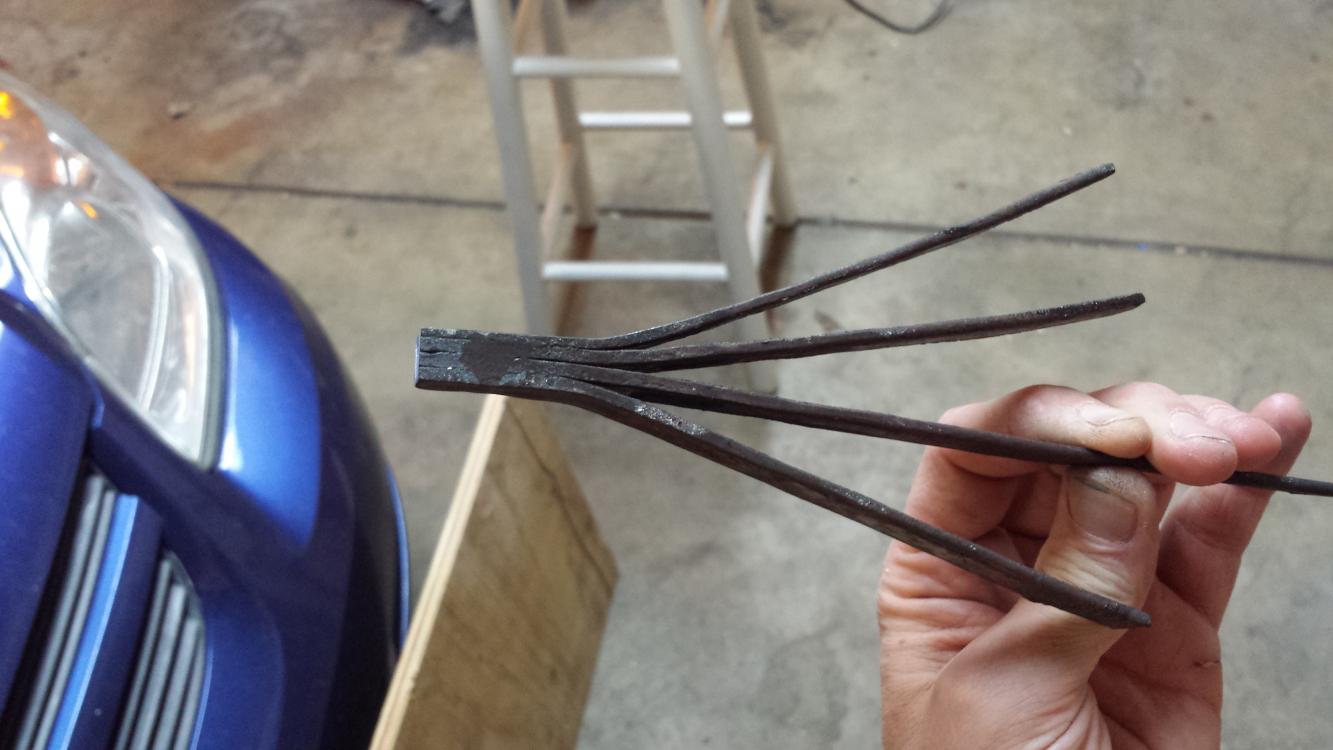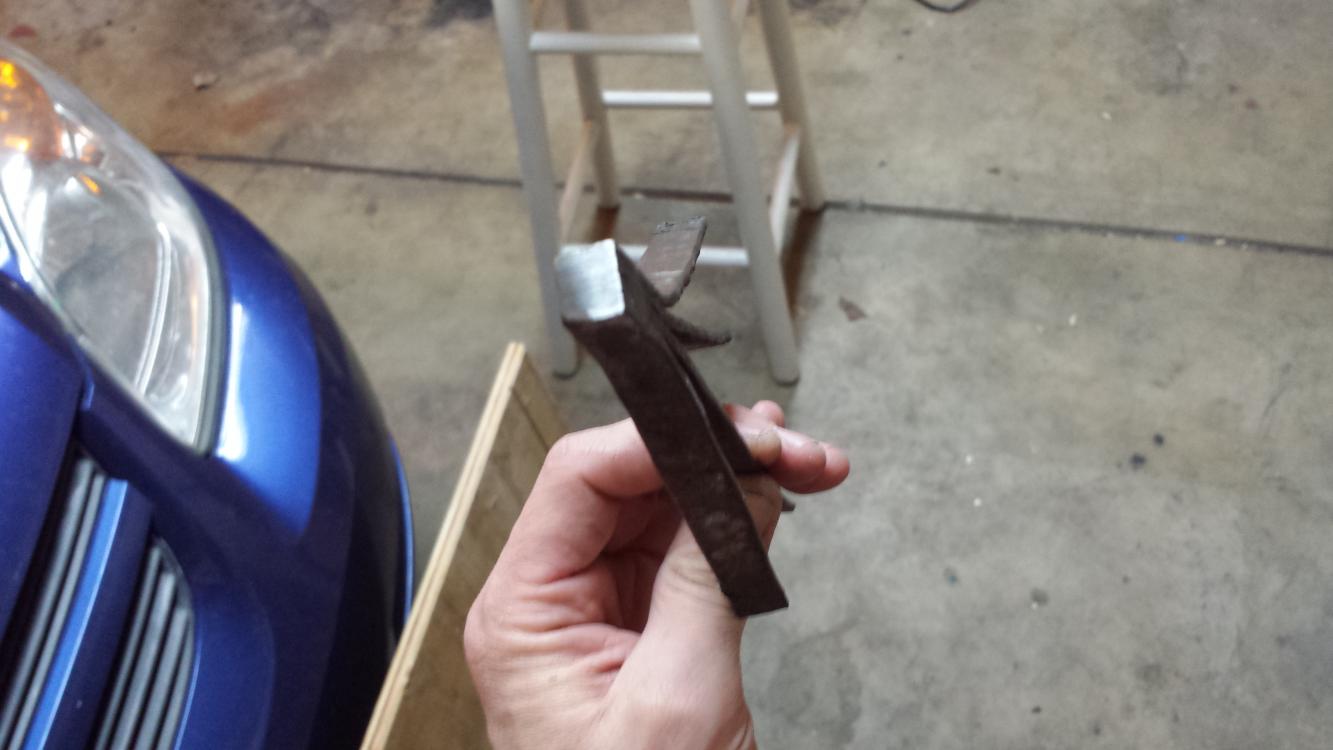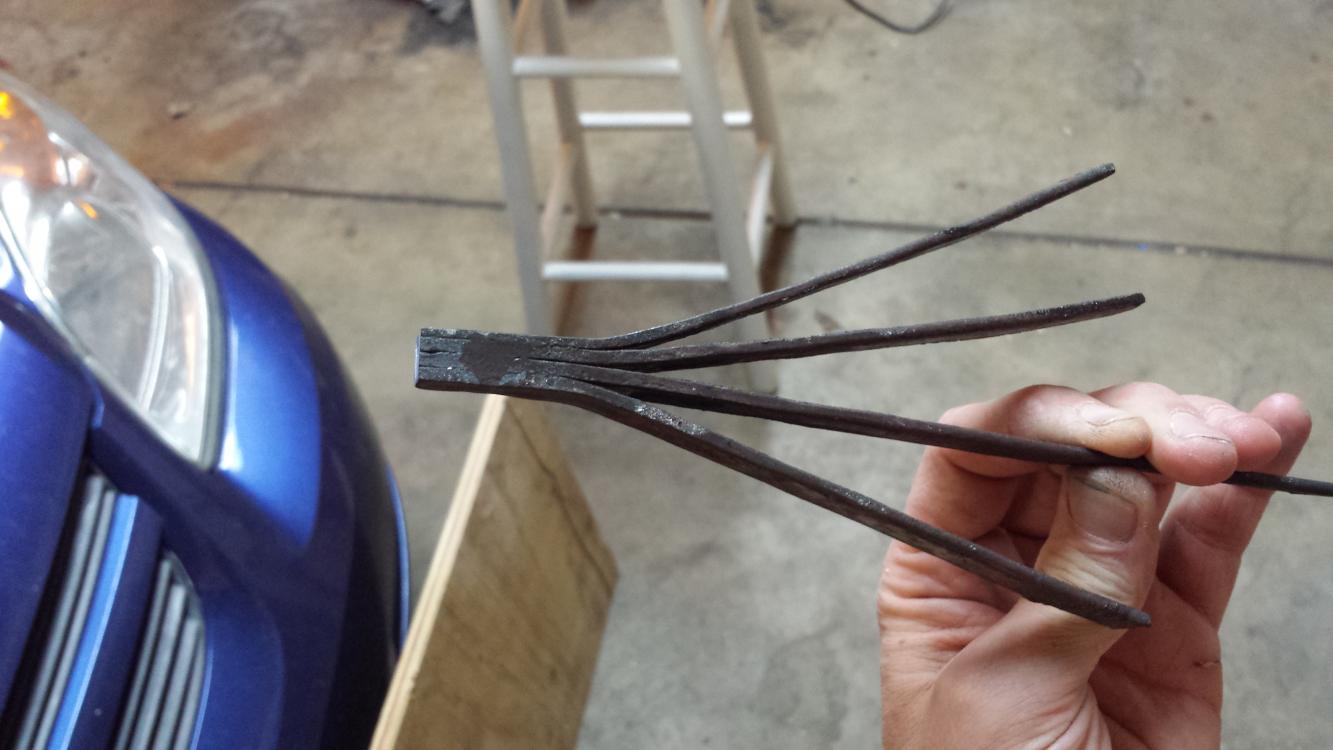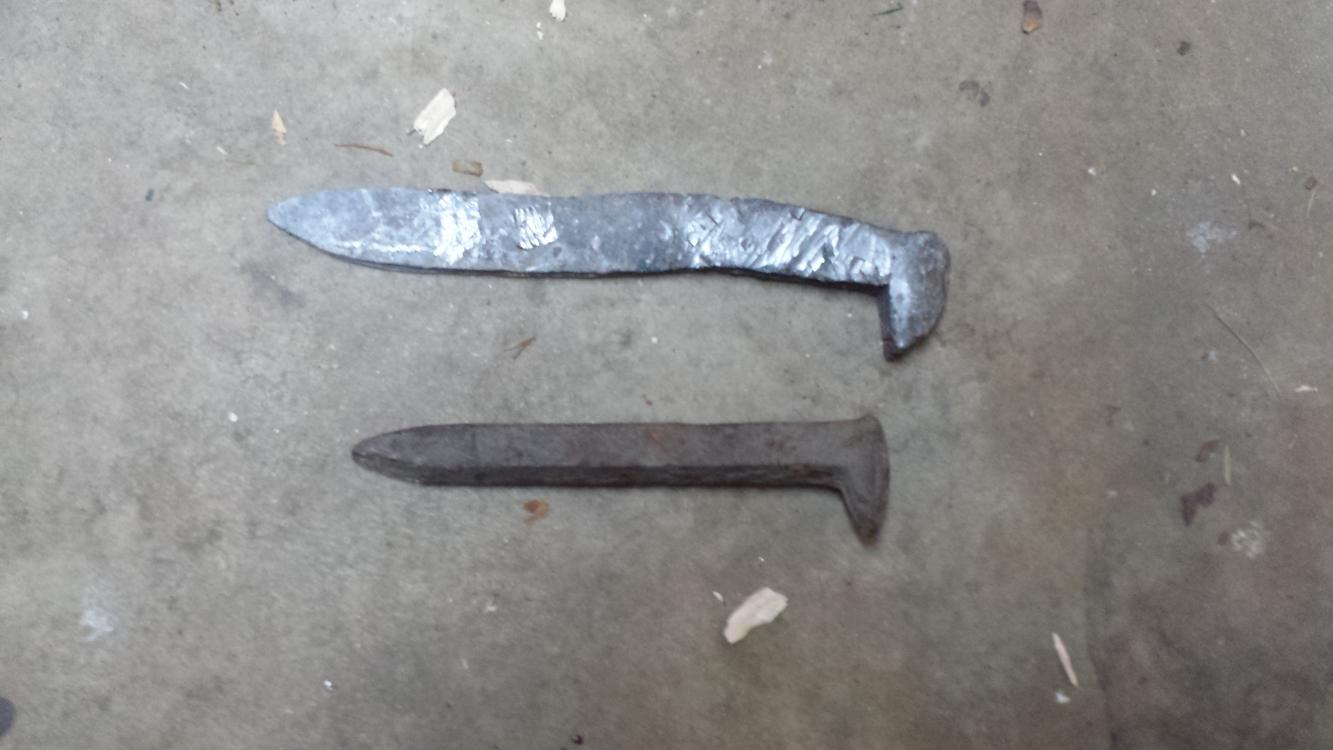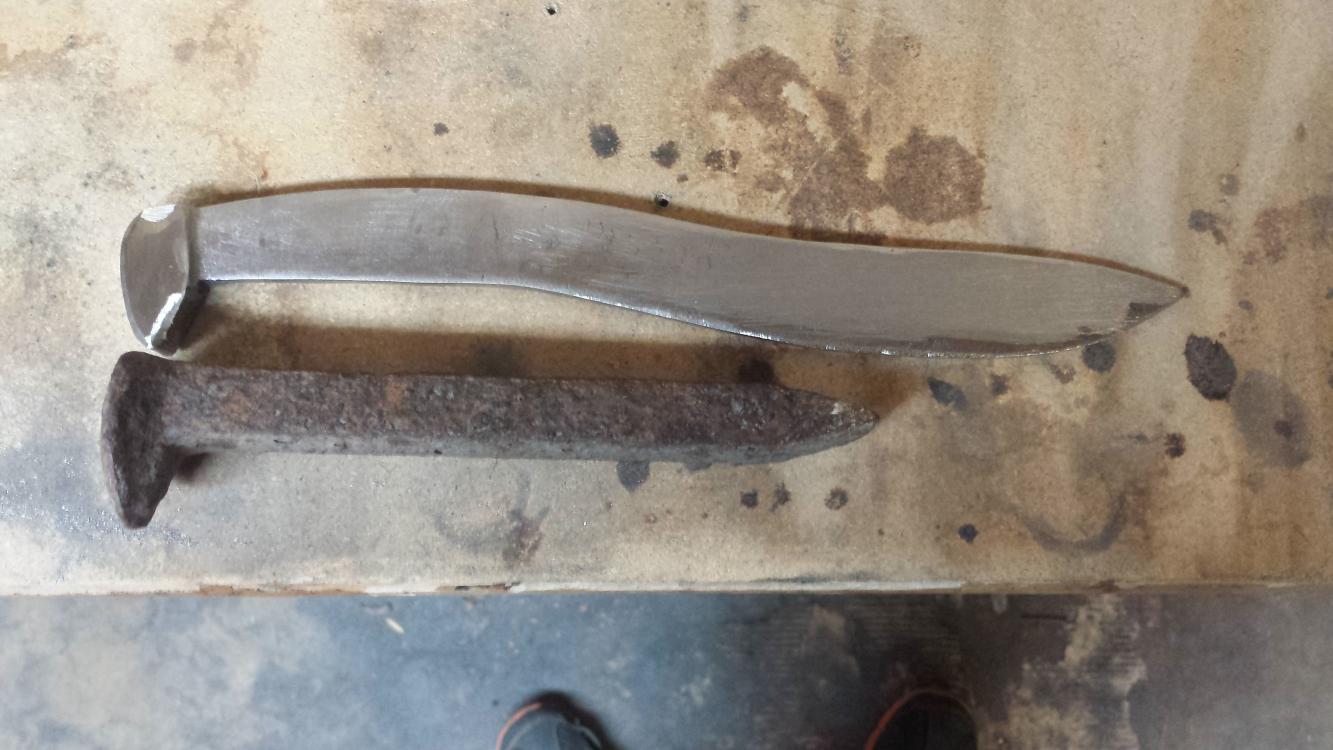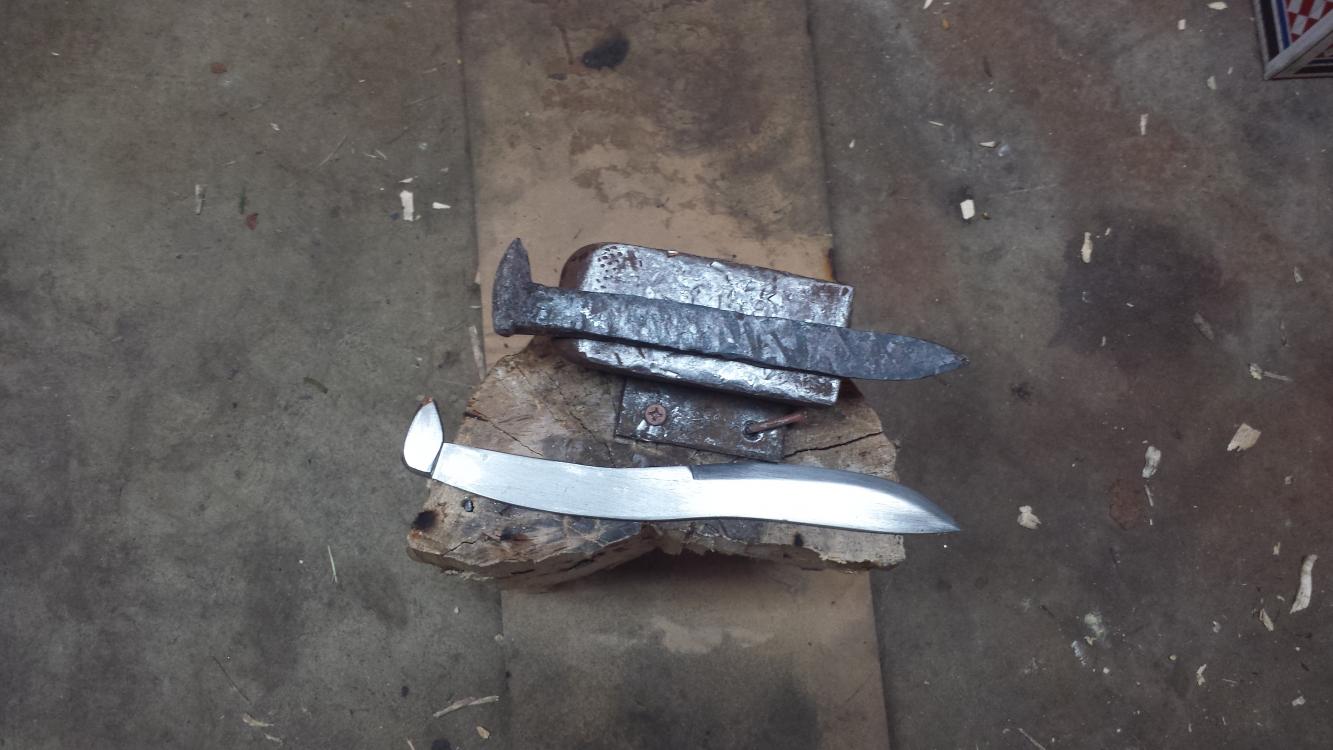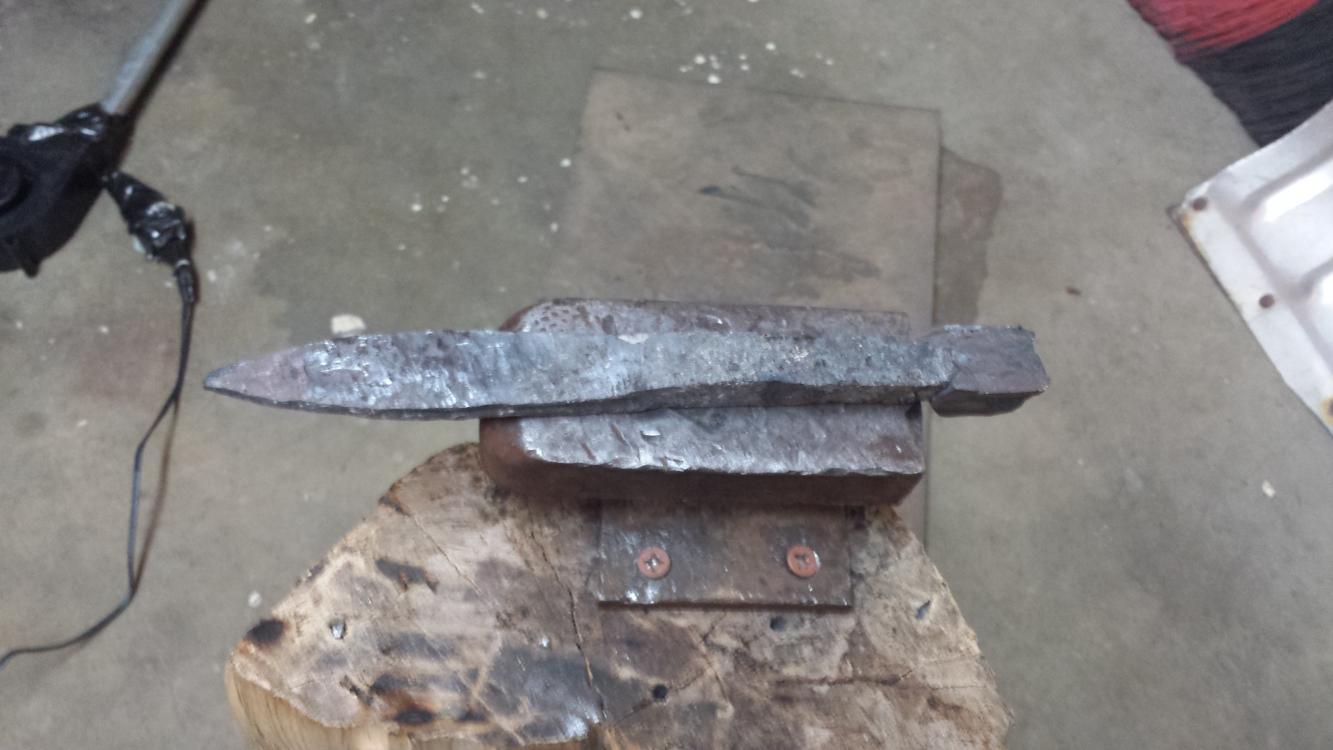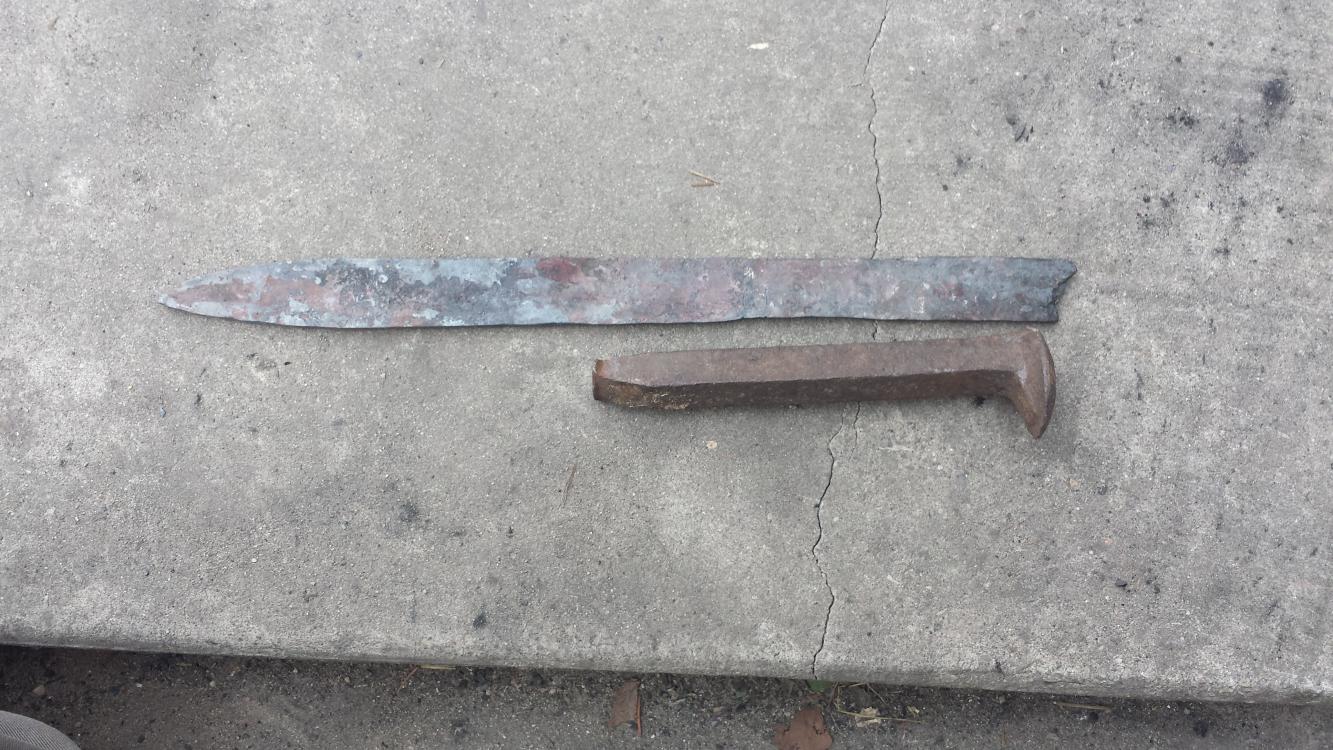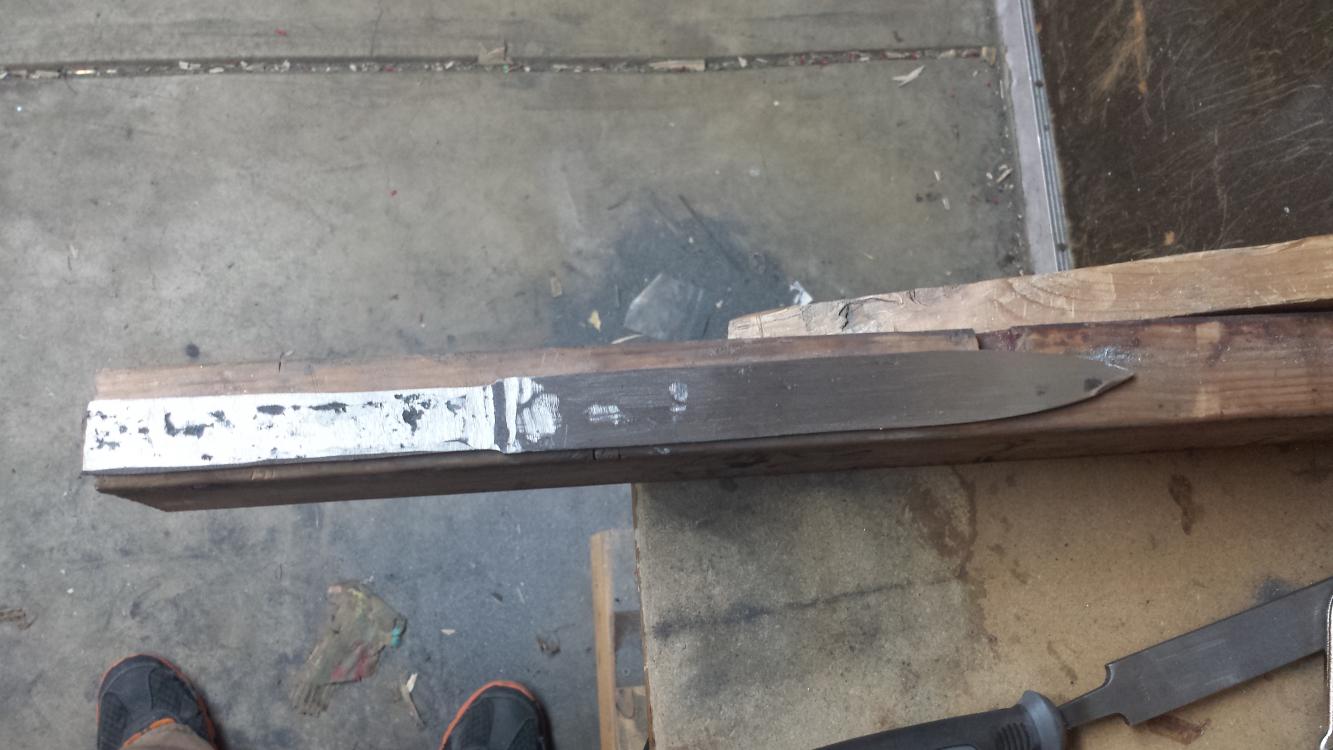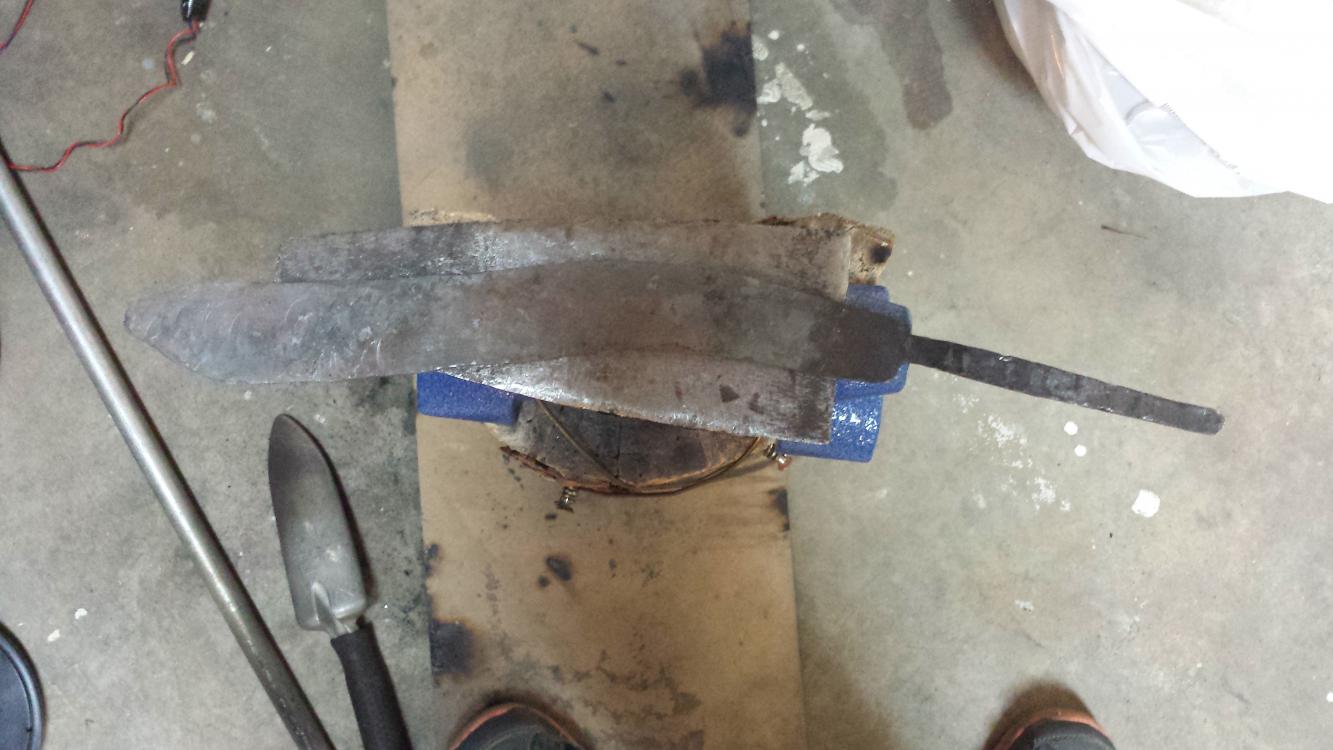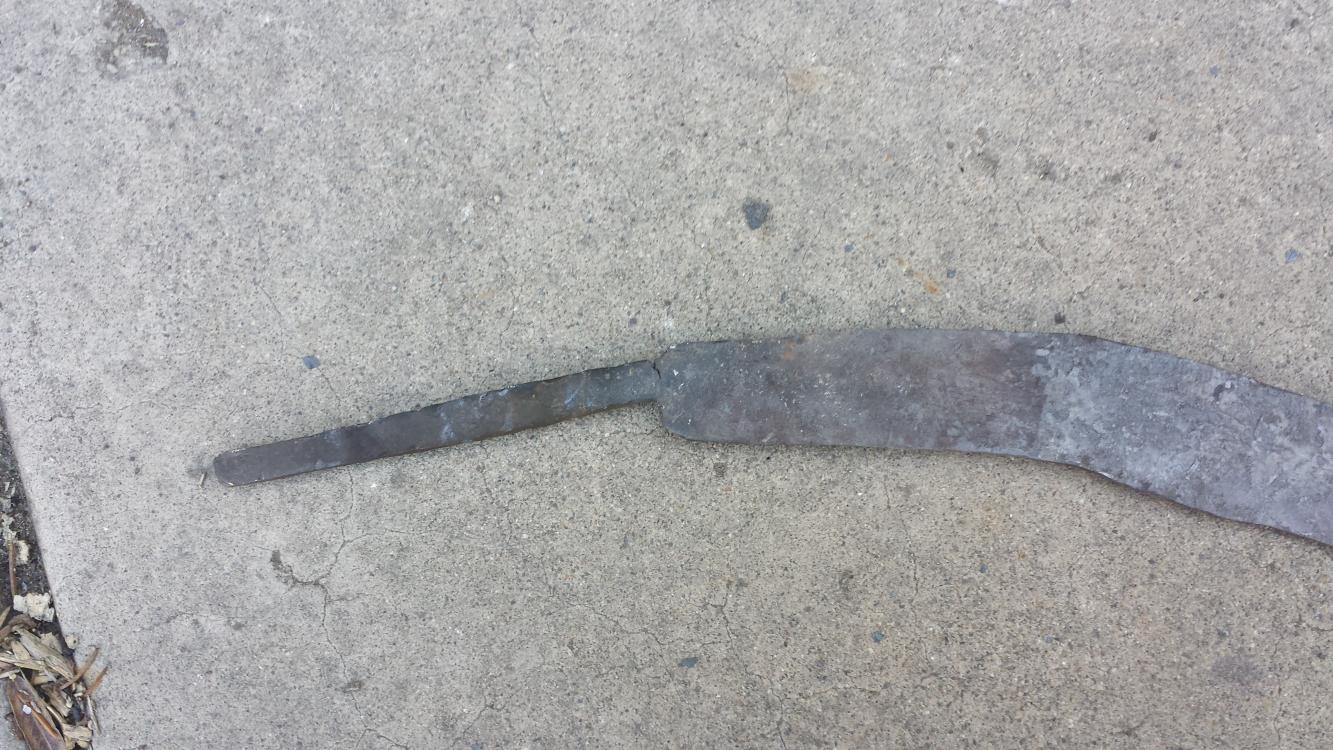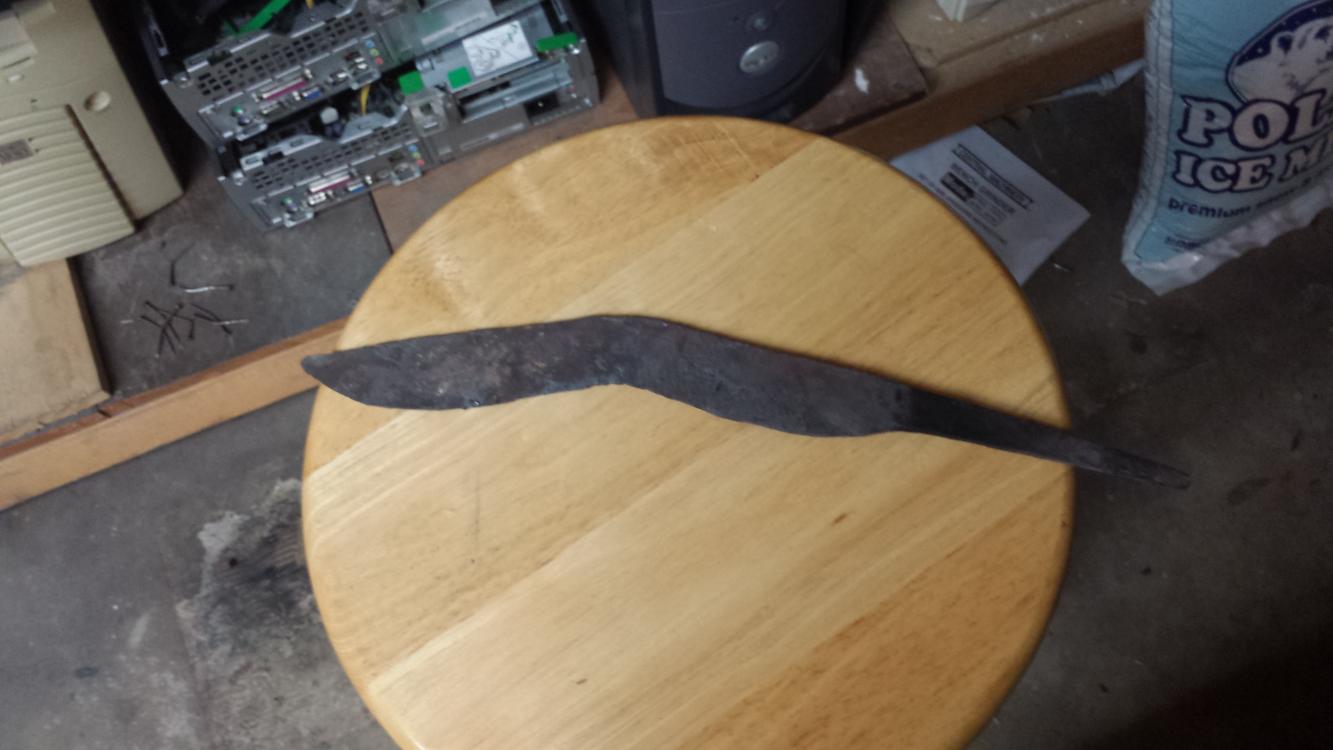
Malice9610
Members-
Posts
167 -
Joined
-
Last visited
Content Type
Profiles
Forums
Articles
Gallery
Downloads
Events
Everything posted by Malice9610
-
Winter has been a bit Odd here in Utah. We have snow in the mountains, but there has been little to no snow in the valley, and what is normally a VERY cold and snowy month has been nice and mild " light jacket " weather instead of " heavy coat " weather.
-
OK, So I was unable to start my " Real Rail Roadspike " knfe project this weekend, unfortunately the weather and my forge both decided to play against me. So I started doing more research on the process to use the O1, Annealing, heat treating and such to ensure I had a good understanding of the process, and I found something that created a question in my process. I notice a few different metal sites state to temper immediately after hardening, which considering I will be forging this in a Coal forge, I am very reluctant to do what with the better half having issues with me sticking dirty ugly scaly items in our normal stove to heat treat. From what I gather the reasons for the immediate temper is due to the steel's brittleness. Can I Harden the steel, then take it to my belt grinder ( new purchase this weekend ) to clean it all up and make it pretty, and THEN temper it ? To me that would make perfect sense, but Im a bit reluctant to harm my steel doing it the wrong way. Also, any recommendations on oil to quench with, since these will be mild steel / O1 blade bit knives, Ive seen peanut oil, motor oil and a few other items tossed around, but none of the steel mfg. sites list anything specific for O1 beyond " Oil " and none of them mention quenching a blade/project that is of 2 metals.
-
Show me your first blacksmithing project
Malice9610 replied to Glenn's topic in Blacksmithing, General Discussion
The bottom item is my first ever blacksmithing project, Which I started mid January this year ( still not finished but close ) And then this is my first ever successful Forge Weld, That I did today.. Im a newb... -
Those are gorgeous knives, I am new here and to this craft. I hope to one day be able to make items that can compare to those you posted. As for the kids situation, I can understand your sentiments on that, I am only able to work on my side projects on the weekends since that is when my children are with their mother.
-
Was the spike you used in that first one corroded at all? or was it a newer spike? I ask because I have a semi large stockpile of spikes ( grandfather was a Union Pacific man his whole life ) that I am working with as I learn this craft, and am curious about the coloration yours has compared to the pieces I have worked / working on.
-
So I am new to this whole blacksmithing thing, have been actively smacking hot metal with a big hammer since about the second week in January of this year. Today, I attempted forge welding for the second time, The first time being a Rail road spike, i tried to fold it on itself, it failed in a spectacular fashion as to be expected when a newb does something beyond their abilities. I took some 1/2 inch flatbar ( A36 I think. not exactly sure. ) and cut it to 6 inch lengths and stacked it 4 deep ( bar 3 is longer to use as a handle ) heated it, fluxed it, heated it till a coat hanger stuck to it, and then lightly tapped it.. Eureka.... Success, I was able to feel the difference tapping once the 4 layers had bonded. So I wire brushed it all off, refluxed it, and stuck it back in the fire.. And thats where things went wrong. I was able to forge weld about the first inch or so of the 6 inches, but no matter the amount of flux, nor the heat I reached I could not get the rest of this " Test Billet " to forge weld. I suspect that the flux ( I did flux the entire piece, not just the first part ) burned off further down and scale developed which prevented the success after the initial heating. So I spread it apart and sure enough, there was scale in between the pieces, I should add that i took each piece to my new belt sander, and made sure the metal to metal contact was pure metal, no scale or oxy layers before I started. So my questions are these. Is it better to heat the entire billet, and attempt to forge weld the entire length in a single heat, rather then attempt to do it in sections ? It would seem based on my results, that doing it that way would be the most likely to work, However I have seen youtube videos where they did multiple heatings to get the entire billet welded, I would guess the placement in the fire had a lot to do with the success they had where I failed. Since forge welding mild steel occurs at a higher temperature then forge welding high carbon steel types, and you have to be careful not to burn the steel, Its obvious I have the needed heat level to forge weld High carbon steels ( O1 specifically as thats what I have on hand ) So my next question is I Plan to attempt to forge weld O1 to a Rail spike tomorrow for a " Rail Knife " that is a real knife. My thoughts are to split the spike, let it cool , Flatten a bit from the O1, cut the O1 to match the current blade length, clean the crap out of both pieces, heat the spike, clean and flux while still hot, insert O1 and place in the forge " edge up " so the spike / mild steel takes the brunt of the heating forces, and use the " coat hanger " trick on both parts of the knife to check for forge welding temp. Is there a better way to do what I am attempting to do? I have watched a few different videos on ' Bitting a Hatchet/Tomahawk/Random metal project " with O1 and Rail spikes specifically and item placement in the fire with relation to the different specifics of each steel is never covered nor is placement in the fire. I am on a limited budget, so wasting quality steel is not an option for me, the spikes themselves are free to me, but the O1 isnt something I want to burn up experimenting if I can help it. Ohhh, and here is a cross section of the forge weld I did today. There are some minor lines on one side, however I will say I did not do much hammering on the cross section of the weld, I would say I MIGHT have hammered the cross section of the weld once on each side, with the majority of the work being to push the stack together more. Any suggestions that might prevent the waste of quality O1 steel would be Greatly appreciated, Thank you everyone, I have already learned so much from lurking on this site for the past few months, Now that I am moving beyond working with mild steels and basic shaping, I certainly hope to learn a great deal more.
-
well this weekend I should have access to some leaf and coil springs to build up my stock of better steel, I just have to wait since my dad who has it, and myself both work very demanding weekday jobs so the only time he has to help, and my only time to work on improving my skills is on the weekends. I will likely continue to practice hammering and such with the spikes just to improve my hammer skills as that practice should translate over to any kind of steel I work. I also need a better mount for my Anvil, i suspect the anvil height is at least part of my issue, the face is only about 18 inches off the ground, and I am nearly 6 feet tall. So there is a bit of bending and such involved when I work. But I plan to change the mount this weekend as well, so we will see if that does not have some positive effect on my hammering. I will also be dressing the face of my hammer this weekend while getting the steel as I currently lack a grinder of any kind beyond a cheap Harbor Freight 6 inch bench grinder which im reluctant to use on my only smithing hammer.
-
well for the moment the 1/8th stock is all I have aside from the spikes. plan was to try to essentially fold it over and over on itself to make a larger diameter piece of stock, basically try and forge weld a 1/8th piece on itself to about 1/2 inch. It might be an exercise in futility but its worth a shot. Once the weekend gets here ( im a full time dad and full time oncall computer geek for hospitals during the week ) ill be going to help my dad clean out his scrap pile of items such as coil springs and leaf springs and other more suitable steel, but considering the costs of it all im wanting to retain those materials for when i do better at other things such as my hammer skills. I figure if I can make it work on 1/8th mild steel and rail road spikes, I can waste less good steel making mistakes I should have made on the crap steel.
-
And yes, my hammer control and hammer striking is dreadful, which is why I plan to work on forge welding as my next skill set project, I only have a 6 inch grinder, and files to work with, so I VERY much need to improve my hammer skills before I can produce anything I would ever consider selling.
-
By sorta, what I mean is that I have been lurking reading posts and following links and looking at pictures of other peoples work for a couple months now. First, I must say there are some VERY talented people on this site, who make some VERY VERY gorgeous work, and I hope to one day reach that level of skill in both Knife making and general blacksmithing. My name is Robert, and I am from Salt Lake City Utah. I built my first forge in January of this year, something I have been planning to do for many years with the intent to make knives and eventually move into swords and other weapons, along with making fun things that are not designed to hurt people. I did start with such items as Rail road spikes and A36 mild steel, as I have an abundance of this material to work with, my Grandfather worked for the railroad his entire life, and my father built all sorts of " rod iron " projects as a side business pretty much my entire life up till about 2-3 years ago, so all of their materials and scraps are pretty much fair game for my projects and practicing. As I said before, I have been lurking on the site for some time reading and learning, I by no means consider myself even beyond " beginner " status, but felt it time for me to become more social with the people that unknowingly provided answers to questions that are asked by all newbs. Here are pictures of my so far first three projects. The first three, are of my very first attempts at blacksmithing and knifemaking. Considering most of my past experience and enjoyment of metal working comes from my dad. I decided to make a hunting knife for him as my first project. Yes its a rail spike, I do plan to make up a batch of " Super Quench " to make it as durable as possible, however even he knows this is more of a " minor use / children's work hang on the fridge " type knife, It still needs some minor file work and cleanup as the end of the handle isnt perfectly straight, still needs a handle roughed out and pin holes drilled before it can be " finished " Second set of three, Is a double edged knife I have made for myself, It is very much still a work in process as it still needs grinding and edging, and I am contemplating a center fuller along most of the blade length, the handle needs to be smoothed out and drilled as well. The third set of three, is of a Kukri I plan to give to my girlfriends younger brother, who likes that type of knife. As you can see there are actually 2 instances of this project, the first one I made the tang way too narrow, and as a result the tang split off the blade while doing some minor spine adjustments. So I heated another spike up, and made the tang MUCH stronger on the second try so it should not have the same issue. I recently purchased some O1 tool steel, I plan to spend quite a bit of time practicing forge welding a36 1/8th inch rod onto itself to practice the forge weld process, but then plan to attempt to forge weld O1 into the blade section of rail road spikes till I run out of them. I do plan on selling these ones but locally and for a very fair price. I just wanted to share what I have done so far, Introduce myself and thank everyone for providing information to newbs like myself, Without ever asking a single question I have already learned so much just reading what others have asked from all of the great responses on this site.
